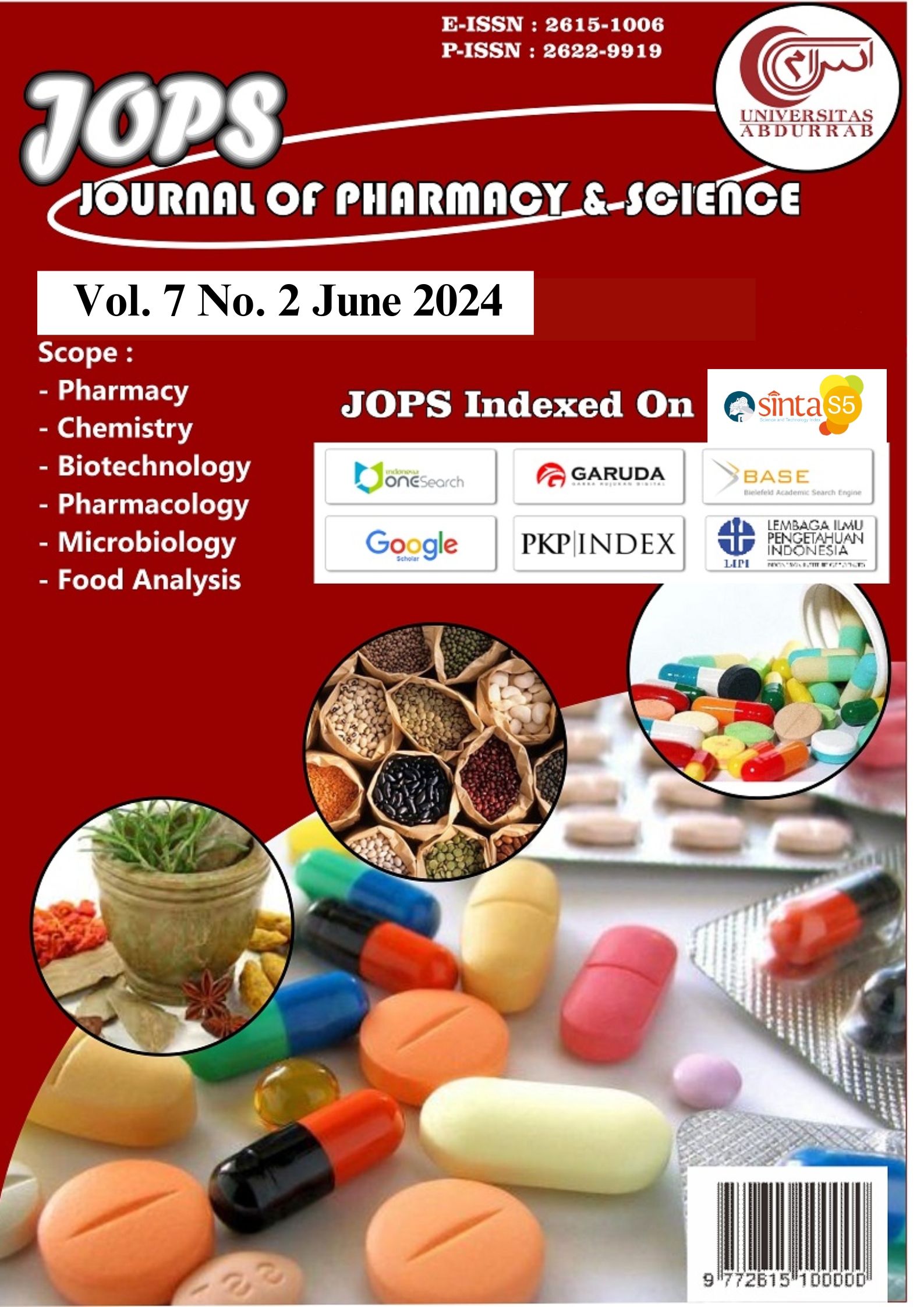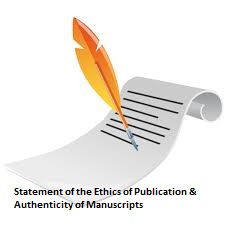The Demineralization Optimization for Chitosan Synthesis from Crab Shell Waste (Portunus pelagicus)
DOI:
https://doi.org/10.36341/jops.v7i2.4653Keywords:
Demineralization, Chitosan, PortunusAbstract
Chitosan, gelatin, albumin, and sodium alginate are examples of natural polymers that are often utilized as a basis material for polymeric nanoparticles. The deacetylation of chitin molecules produces the formation of chitosan. Chitin, protein, CaCO3, MgCO3, and astaxanthin pigment are all found in crab shells. Crab shell is an undervalued potential waste. Despite the fact that copious crab shell waste can be used to produce raw materials and industrial products. According to the findings of Mohadi et al (2014), chitosan was extracted with a yield of 70.71% and a deacetylation degree of 76.6%. Previous research on optimizing chitosan synthesis has involved changing the base reagent at the deacetylation stage. The results showed that a 50% concentration of KOH reagent produced the best chitosan properties. Another study on the synthesis of chitosan from crab shells got a yield of 70.4%, and the following analysis showed that this high yield is due to the amount of calcium. Therefore, demineralization in the synthesis of chitosan from crab shells must be optimized. The calcium content was measured after optimization with various solvent concentration variations. The best demineralization optimization results use 3 M hydrochloric acid with a decrease in calcium content of 97.75%.
Downloads
References
[2] Pérez, W. A., MarÃn, J. A., López, J. N., Burgos, M. A., & Rios, L. A. (2022). Development of a pilot-ecofriendly process for chitosan production from waste shrimp shells. Environmental Processes, 9(3), 55.
[3] Liu, R., Luo, C., Pang, Z., Zhang, J., Ruan, S., Wu, M., ... & Gao, H. (2023). Advances of nanoparticles as drug delivery systems for disease diagnosis and treatment. Chinese chemical letters, 34(2), 107518.
[4] Yanat, M., & Schroën, K. (2021). Preparation methods and applications of chitosan nanoparticles; with an outlook toward reinforcement of biodegradable packaging. Reactive and Functional Polymers, 161, 104849.
[5] Ismik, D., Mansuroglu, D. S., BuluÅŸ, E., & Sahin, Y. M. (2020). The use of chitosan nanoparticles obtained by ionic gelation method as a drug delivery system. Journal of Materials and Electronic Devices, 5(1), 6-11.
[6] Tissera, W. M. J. C. M., Rathnayake, S. I., Abeyrathne, E. D. N. S., & Nam, K. C. (2021). An improved extraction and purification method for obtaining high-quality chitin and chitosan from blue swimmer (Portunus pelagicus) crab shell waste. Food Science and Biotechnology, 30(13), 1645-1655.
[7]Mohadi, R., Kurniawan, C., Yuliasari, N., & Hidayati, N. (2014, October). Karakterisasi Kitosan dari Cangkang Rajungan dan Tulang Cumi dengan Spektrofotometer FT-IR Serta Penentuan DerajatDeasetilasi Dengan Metode Baseline. In Seminar Nasional FMIPA UNSRI (Vol. 2, pp. 1-10).
[8] Ahyat, N. M., Mohamad, F., Ahmad, A., & Azmi, A. A. (2017). Chitin and chitosan extraction from Portunus pelagicus. Malaysian Journal of Analytical Sciences, 21(4), 770-777.
[9] Indriani, Alya. Pembuatan dan Karakterisasi Kitosan dari Limbah Cangkang Rajungan dengan Tiga Jenis Pereaksi Basa. (Skripsi). 2022.
[10] Abirami, S., Nagarajan, D., Samrot, A. V., Varsini, A. M., Sugasini, A., & Anand, D. A. (2021). Extraction, characterization, and utilization of shrimp waste chitin derived chitosan in antimicrobial activity, seed germination, preservative, and microparticle formulation. Biointerface Res. Appl. Chem, 11(2), 8725-39.
[11] Hosney, A., Ullah, S., & BarÄauskaitÄ—, K. (2022). A review of the chemical extraction of chitosan from shrimp wastes and prediction of factors affecting chitosan yield by using an artificial neural network. Marine Drugs, 20(11), 675.
[12] Al Shaqsi, N. H. K., Al Hoqani, H. A. S., Hossain, M. A., & Al Sibani, M. A. (2020). Optimization of the demineralization process for the extraction of chitin from Omani Portunidae segnis. Biochemistry and Biophysics Reports, 23, 100779.
[13] Sidauruk, S. W. (2018). Karakteristik Rajungan (Portunus Pelagicus) dan Potensinya Di Bidang Pangan Dan Kesehatan. Jurnal Perikanan. Departemen Perikanan dan Ilmu Kelautan.
Downloads
Published
How to Cite
Issue
Section
License
1. Copyright of all journal manuscripts is held by the JOPS (Journal Of Pharmacy and Science)
2. Formal legal provisions to access digital articles of electronic journal are subject to the provision of the Creative Commons Attribution-ShareAlike license (CC BY-NC-SA), which means that JOPS (Journal Of Pharmacy and Science) is rightful to keep, transfer media/format, manage in the form of databases, maintain, and publish articles.
3. Published manuscripts both printed and electronic are open access for educational, research, and library purposes. Additiponally, the editorial board is not responsible for any violations of copyright law.
licensed under a Creative Commons Attribution-ShareAlike 4.0 International License.










